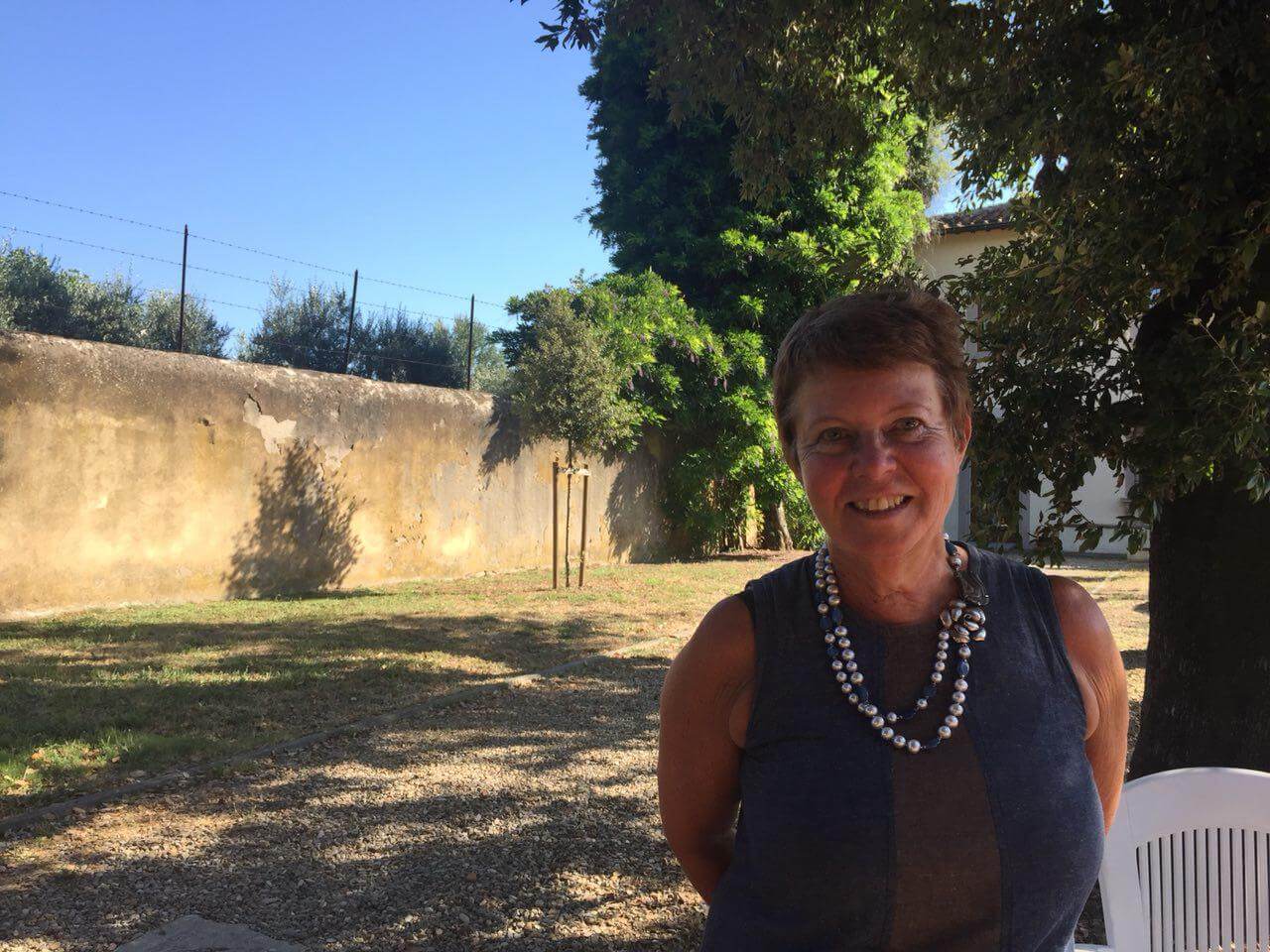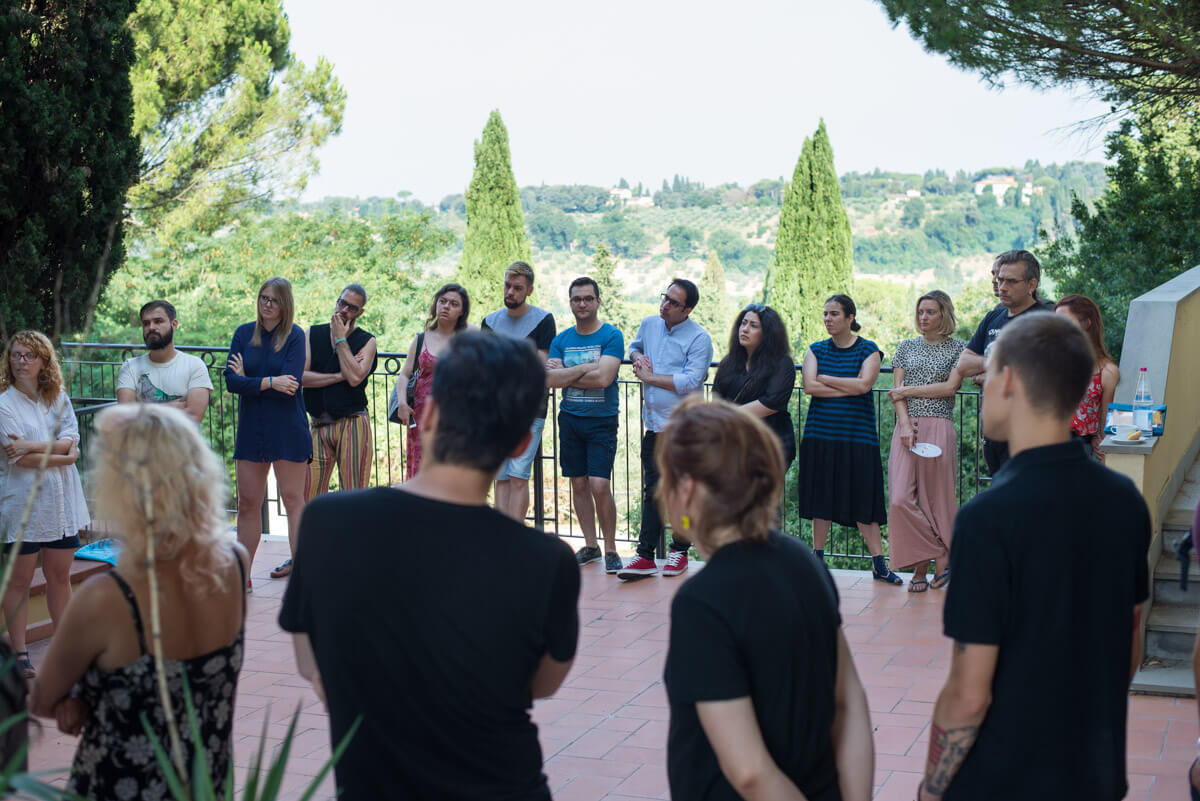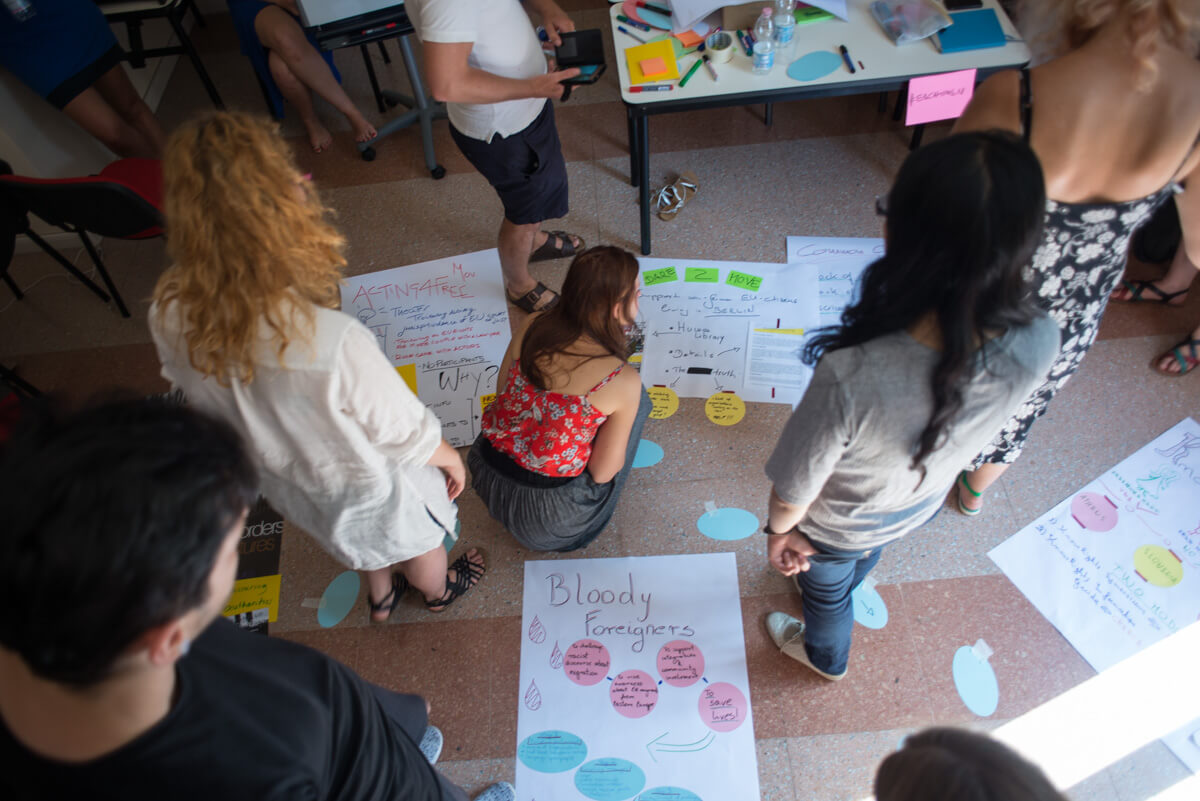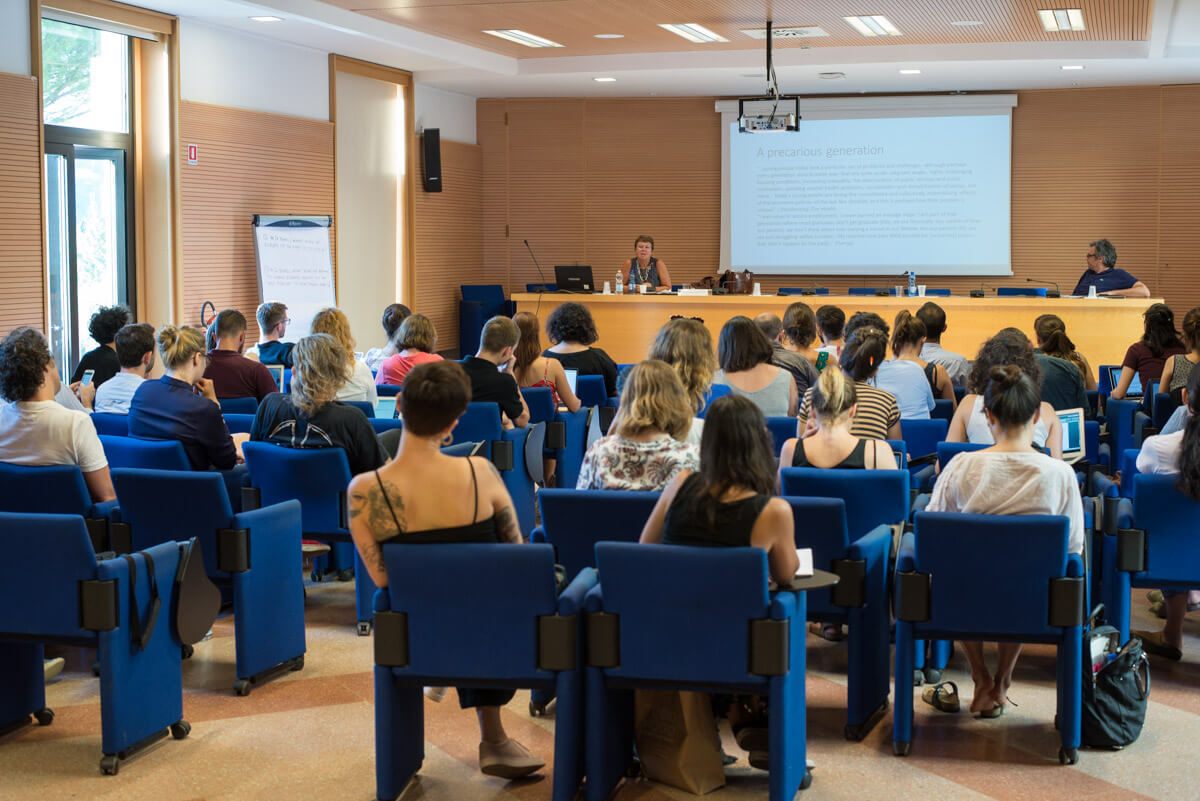Donatella della Porta is an Italian professor of political science and Director of the PhD program in Political Science and Sociology at the Scuola Normale Superiore in Florence. She was the first keynote lecturer to have taken part in the Campus of European Alternatives last week in Florence. During her lecture “Critical young Europeans” she addressed some of the key differences between the generation active at the time of the 1968 movements and today’s youth. Characteristics may differ, but today’s precarious generation is economically unstable, socially fragmented, culturally solitary and politically disillusioned. Its mobilization is characterized by a focus on direct action, intersectional framing and by the perception of a big threat. Interestingly, young activists often connect to social movements of the past but with the exception of trade unions, and are open to transnational organization. Political Critique had the chance to talk to Donatella Della Porta about some of the main topics of her research, including social movements, new party movements and the EP elections coming up next year.

Marta Cillero: What do you believe has been the impact of social movements that developed after 2011 in Europe in party system politics? Has it brought something new to the way parties operate and are organized?
Donatella della Porta: We can’t generalize to all countries and areas. The mobilizations of 2011 had very much in common, but at a national level, they also had a lot of specific characteristics. They have definitely had a general impact on the traditional party system but the also the characteristics of the movements differed depending on the country. Spain, for example, is the most obvious case in which a new party developed with the movement. Podemos says they are not the 15M movement party, but of course without this movement they wouldn’t have developed, and the ideas and claims they put forward come from the streets. The movement also affected the organizational format of the party pushing towards a more horizontal organizational model. Of course when a new party enters the institutions it needs to adapt and make compromises and this creates tensions with the social movements and dilemmas, but this is also the case in which you have a very direct impact. There are also other cases in which for sure there was an impact: Greece is an example of this, although Syriza was different from Podemos – not only because it rose to power at the national level, but also because it is a party that was born from the previous wave of protests, those originating from the global justice movement, and it developed from a split that took place inside the socialist party. Nevertheless, Syriza was very much influenced by the movement, and it opened up its organisational structure to the anti-austerity movement.
2011 movements have had an impact on the party systems. They disrupted the party system also in countries that had been less affected by the financial crisis
Another example of a movement with a big impact on institutional politics is Iceland, where we have the Pirate Party, which also emerged from the protests of 2008 (the ‘pots and pans revolution’) and the Greens were very much influenced by the anti-austerity movement. You can see an impact of the party system also in other countries, perhaps a less direct one, but equally significant. In Northern Ireland, for instance, Sinn Fein was influenced by the anti-austerity protests, becoming more interested in social demands. Yet another example is Portugal of course, with Bloco de Esquerda, which developed over a longer period of time. Also in Italy, in a different way, the Five Stars Movement has developed from a breakdown of the traditional parties (and specifically the center-left party) following the crisis. So the short answer is that the 2011 movements have had an impact on the party systems. They disrupted the party system also in countries that had been less affected by the financial crisis (take the Netherlands, or France, or even Germany). Where a sort of two-party system dominated, and the movements triggered or accelerated a sort of earthquake at the electoral level. In fact, I think this earthquake and mistrust in the institutions is precisely what has motivated these movements to challenge the traditional parties by participating in local and national electoral politics.

MC: Cities are pioneering new forms of participatory governance throughout Europe. As we could see in the past few years, the importance of public spaces is growing, the squares in particular have become spaces of great importance, providing a new channel for democracy. Do you think that the difficulties citizens’ movements face, in terms of maintaining their autonomy and identity once they become part of an institution, are more easily overcome in smaller areas?
DP: There has been, for a long time, in social movements an assumption that small is beautiful. An assumption that the local level is closer to the life of citizens and that innovation can be developed in an alternative way. Past progressive movements have pushed for de-centralisation and neighbourhood politics, participation at the local level: this is something very important. However, defining what is small and what is big is open to debate. To give you an example, the city of Madrid is a good example of a big city that has introduced many innovative political measures; in Italy, if I have to think of a dynamic city in this sense, it would be Naples, which is also a big city. There is a trade-off with size, because small dimension might also mean less plurality. If you think of the type of spaces in which conservative ideas are more present, it is normally smaller locations, towns, or the countryside.
The local is important, but there are also other important dimensions of political contestation.
However, the local is certainly important also in the history of the left, because it is a space that is easy to conquer, and it is easier to get in contact with people beyond ideological divisions starting from specific actions and things to do. Also for young people the local level is particularly important, in a situation in which national organisations have been increasingly challenged by neoliberalism in crisis. Also, the activists of protest camps have continued their activities at a neighbourhood level, which is the place where you can experiment with new types of social action. The challenge is to move some innovative ideas at the national and transnational level. The local is important, but there are also other important dimensions of political contestation.
MC. European social protest movements sometimes seem to call for a return to national sovereignty. We’ve recently seen the Italian minister, Matteo Salvini, declare his aim to create a network of far-right parties. How do you analyse the consequences of this transnational mobilisation, and the actions of the far right in Europe?
DP: It is obvious that there are internal tensions in this call for a general European coordination of the far right. I expect that the far right will not be so successful in this sense, because the reality is that they have a lot of internal contradictions. To give you a very simplified example, Matteo Salvini wants to send refugees to Austria or Germany but the Austrian government and the German Minister of Home Affairs, Horst Seehofer, wants them to stay in or go back to Italy. Also, one of the requests of the Italian government is that other countries participate in a common action to deal with migration, while at the same time, there are governments in Czech Republic, Hungary or Poland saying they won’t welcome any single migrant. This is something typical for the radical Right: they might aim to thrive on a social climate of culture of exclusion, fixing borders and so on, but since they are strongly nationalist in the type of claims they advance, they fail to coordinate their actions.

MC. Do you think movement parties will have a major role in the next European Parliamentary elections (May 2019), or is the phenomenon past its peak?
DP: Social scientists should never make predictions, especially in these turbulent times, in which changes can happen very quickly and unexpectedly. Some unexpected actions or turns in the public opinion can create problems for movements and movement parties, and at the same time create a momentum for them. For sure this is a situation in which we must consider the relations between movement parties on the right and on the left, as anti-establishment parties are on the rise on both side. This happens, as mentioned, even in countries that seemed to be on the “winning side” of the neoliberal system. What I mean is that old (including center left) parties are very weak; Macron in France is also an example of the financial crisis and related political mistrust has been weakening parties that had been driving forces at the EU level. For this reason, new parties on the right and on the left are emerging as a response. What I think is that the challenge for the left is to be able to go beyond the traditional internal struggles.
The challenge for the left is to be able to go beyond the traditional internal struggles.
The fact that Melenchon wants to kick out Syriza from the alliance of the European left is a very negative type of development because what we need is a convergence of struggles, not this tendency towards divisions. I hope that countries in Southern Europe, such as Portugal and Spain, where at the moment you have these experiences of coalitions, attempts to come together, might teach the lesson to other countries, because we are living in a moment where all internal ideological divisions are extremely dangerous. We also need a space for young people to participate: we’ve been studying participation of young people in groups like Momentum in the UK, but also minorities gathered in different groups that have supported Corbyn during his campaign. This kind of action could have a positive effect in the European left if it could catalyse a moment of attention and dialogue, although one of the consequences of the crisis is that transnational forms of action have become increasingly difficult.
MC. Periodically we hear about young people, that they are disengaged from politics and that they are increasingly sceptical about democracy as a good way of ordering society. Do you think these trends are real, or is something else really happening?
DP: Young people tend to participate a lot in politics when they are convinced that it is something that makes sense for them and that develops according to their cultural states. What we see is that precarious generations face a lot of challenges with regard to collective actions, but it is also true that they are a very progressive generation. Millennials are a much more plural generation than the previous ones, and they are the biggest generation with political participation of non whites, so this makes a huge differences in terms of awareness when addressing challenges. And what we saw with the Sander’s or Corbyn’s campaigns is that young people are ready to participate in institutional politics if they don’t have the impression that it makes no difference whether one votes for the centre-left or the centre–right. In the US they were not ready to vote for Clinton but they were ready to support Sanders. These are some of the conclusions of our researches. It is not a generation that is, by definition, not interested in politics, in fact the young just don’t want to participate if the type of organisation that is far from their own interests and tastes.
MC. And what about the participation of women in institutional politics? Why is it still more difficult for them to take part in public life and participate in politics?
DP: We studied the issue of women’s participation in politics starting from the Spanish case. What is interesting is that there is a new generation of feminists across the globe, represented by movements like Non Una di Meno in Italy or the #MeToo in the US. This new generation of women is very active and very capable of developing innovative and mass forms of demonstrations against violence against women. These young women are bridging the gap between older feminist movements and the current one, and they are also bridging the gap with the institutions and the lack of female representation. What we are seeing is that even with some internal contradictions and tensions, new feminists are rejuvenating and opening up political institutions.

MC. What do you think the future of democracy will look like in the next five to ten years? Will it be a combination of online and offline platforms and connections?
DP: I think that democracy will continue to develop online but not only. One of the lesson of the 2011 movements is that it is not enough to build revolutions on online platforms. In the 15M movement the ‘acampadas’ realised that we need face to face relationships and physical spaces to develop new political alliances. What is needed is also new ways to develop new forms of youth participation in politics to reshape fragmented ties in a fragmented context, and this can’t happen only in online spaces. Also what we saw is that the new generations are to a certain extent more sophisticated than previous ones, in the way they use social media, so they are aware of surveillance and the way these platforms commercialize our data, in fact they often employ social media in a critical way. But of course social media are an extremely powerful tool for communication that can’t be ignored amongst the young generation, because this tool is intrinsic to the way they develop their lives. In this sense, we can’t overlook what takes place on platforms like Facebook or Instagram.
MC. We want to close this discussion by referring to something you said in a previous interview where you stated that we should exploit the current crisis to develop innovation. What do you label as innovation?
DP: It is frequent to hear that we live in a Gramsci’s interregnum, where something old is dying but the new is not able to emerge yet. This can be applied to the situation of the political party system in which parties no longer exist as they did traditionally, but new structured forms are emerging and developing. You also see attempts at building constitutions from below, because it is obvious that we can’t aim to go back to what used to be and doesn’t exist anymore. We need new types of configuration of movements and organisations. The Mareas in Spain or the social clinics in Greece or the reflections on the commons in Italy are examples of experiments with something new. This is most important for the rejuvenation of the Left.
***
The Campus of European Alternatives took place in Florence from July 19-22 with trainings on freedom of movement and countering the rise of far right and xenophobia. Discover more about the Campus of European Alternatives here
![Political Critique [DISCONTINUED]](https://politicalcritique.org/wp-content/uploads/2015/09/Political-Critique-LOGO.png)
![Political Critique [DISCONTINUED]](https://politicalcritique.org/wp-content/uploads/2015/09/Political-Critique-LOGO-2.png)